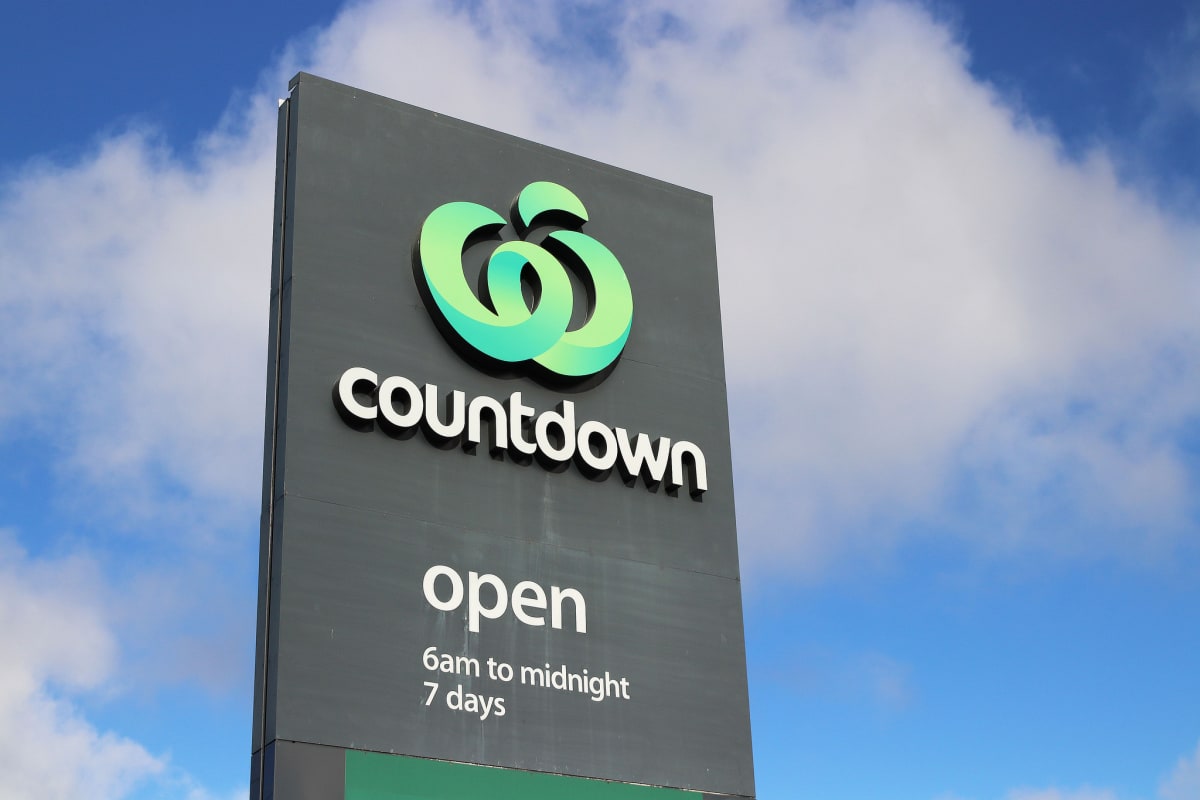Is It Dollars Over Dolphins For Sail Race?
Environment
A super-fast boat race in Lyttelton Harbour might harm dolphins, advocates fear. David Williams reports.
It’s billed as sailing’s equivalent of Formula One racing.
SailGP – or, more properly, Sail Grand Prix – co-founded by New Zealand yachting great Sir Russell Coutts and billionaire Larry Ellison, features identical, foiling catamarans, capable of racing at almost 100kmh. In 2018, Coutts said the competition will “transform sailing”.
New Zealand’s inaugural race, featuring nine countries, will be held in Lyttelton Harbour/Whakaraupō, just over the Port Hills from Christchurch, in March. It’s estimated to rake in millions of dollars of economic benefits. The city’s economic development agency, ChristchurchNZ, is pumping $3 million, of cash and in-kind investment, into the race.
(The race was supposed to be held in January this year, but was canned because of Covid-19 restrictions.)
SailGP has a global TV audience numbered in the millions, so the Lyttelton leg might have been thought of as the perfect event to declare to the world the southern city is open for business, after the earthquakes and disruptions because of the pandemic.
Event hype built earlier this month with a visit to Ōtautahi by Aotearoa team members Peter Burling and Blair Tuke. Fan village tickets sold out within 24 hours. Private charter boats, for on-water viewing, are being advertised for tens of thousands of dollars a day.
The harbour is home to a range of native wildlife, including seabirds, fish, and marine mammals. Banks Peninsula, including Lyttelton Harbour, hosts the largest Hector’s dolphin population on the South Island’s east coast, of about 1100 animals.
Research by the University of Otago’s marine mammal research group between 1991 and 2014 shows Hector’s routinely use the harbour. A Master’s thesis by Eva Leunissen, submitted in 2017, said while most sightings were around the outer coastline, “dolphins, including calves, have been sighted in the middle of the harbour and near the wharves”.
So what happens when you race fast, agile boats in an area frequented by the nationally vulnerable Hector’s dolphin? Put another way, would a Formula One race be held in kiwi habitat? (Hector’s dolphins are known as the kiwis of the sea.)
“I don’t think it is in the best interest of the dolphins,” Genevieve Robinson, a committee member of Māui and Hector’s Dolphin Defenders who has just been elected to ECan, Canterbury’s regional council, says of the SailGP race.
“It’s the wrong time of year, and it’s the wrong location. That means that it shouldn’t be going ahead.”
March is the peak season for calving, when mother dolphins nurse their babies, Robinson says. Yet, she says, a Hauraki Gulf-style “race track” is being imposed on a tiny, unique harbour.
“They’re more interested in the money value than actually the overall value of the dolphins being safe in their habitat.”
Newsroom put this ‘dollars over dolphins’ line to ChristchurchNZ.
No, that’s not the case, says acting general manager of destination and attraction Tracey Wilson in an emailed statement. “We consider that this event will have a positive impact for the overall health of marine mammals in Whakaraupō, Lyttelton Harbour and for our region more broadly.”
A marine mammal management plan was developed “under the close guidance, robust review and debate” from an advisory group, which contained scientific and cultural experts. The Department of Conservation was consulted. ChristchurchNZ was an “observer” of the advisory group.
SailGP event director Karl Budge says via email comprehensive protocols are in place to mitigate risk to marine wildlife, and a plan was developed after engaging the foremost local experts.
“We are confident in the efficacy of this plan and the measures laid out.”
Wilson confirms ChristchurchNZ is paying $1 million “and an additional $500,000 of value in kind” for the 2023 race, and the same amount for the 2025 event.
“This is equal to Tātaki Auckland Unlimited’s contribution to host events in 2024 and 2026, and it is worth noting that season three and season five events in Christchurch are forecast to provide significantly increased benefits compared to the cancelled season two event, including more teams participating, a greater global broadcast audience and additional visitors due to the lessening of Covid-19 travel restrictions.”
In a statement provided by SailGP, Yvette Couch-Lewis, of Te Hapū o Ngāti Wheke Rāpaki, the advisory group chair, says: “I stand by and have the confidence of the Te Rōpū Tiaki Whakaraupō Advisory Group, who have the knowledge and expertise needed to develop a marine mammal management plan.”
Valued intellectual property
Yet the public won’t get to see the plan.
In June, ChristchurchNZ’s Wilson told Newsroom the marine mammal management plan would be publicly available, after further information was developed to deliver and implement it.
The agency’s dedicated SailGP webpage has a button labelled, “View Marine Mammal Protection Plan”, but no copy can be found.
Last week, however, Wilson said the plan “is the valued intellectual property of SailGP” and considered a world-first for marine mammal management. Elements of the plan could be replicated at other race locations.
“As such, the plan in full will not be released, however additional information about the plan will be made available in due course.”
Robinson, the dophin advocate, slams the lack of transparency, saying: “It’s using public space, it’s using public facilities, it’s using the shipping channel – part of it – it should be public.”
The ChristchurchNZ board reviewed and accepted the marine mammal management plan in September last year. Wilson says the board isn’t the body to “approve” the plan; it accepted the group’s advice “as part of its broader governance role as the lead host city agency”.
This jars with its website, however, which said the plan was “reviewed and approved by the ChristchurchNZ board”.
Robinson sees a conflict in an agency paying millions for the hosting rights, and promoting the race as “unique and unmissable”, also signing off the animal safety plan.
“It’s self-regulated, basically. And you have no public input at all. For the likes of you and me and others, we can’t even obtain that information.”
Wilson, of ChristchurchNZ, says after the race was postponed from this year to next year, the advisory committee members and Te Hapū o Ngāti Wheke Rāpaki recommended moving the event from January to March, when dolphin numbers are expected to be lower.
“The basis of the plan is to implement an array of risk management measures, assuming that Upokohue/Hector’s dolphins are present in the vicinity,” Wilson said in June.
“Some of these measures include trained on-land and on-water Hector’s dolphin observers, defined zones, pre-event on-water surveys, shut down periods (including drills) and staff training.
“There are also several supporting measures that SailGP and ChristchurchNZ are exploring, including drone surveys (pre-sailing), real-time underwater acoustic surveillance (passive and active), the use of new sighting app technology and informal observers. Aside from pre-event measures, the operational plan will also include step-by-step actions should a dolphin be sighted in the vicinity during racing. These include stopping or delaying racing if a marine mammal is detected in a specific alert zone.”
Earlier this year, racing in the San Francisco leg of SailGP was halted by the appearance of a whale.
Budge, the SailGP event director, says a specialist working group included leading scientists, marine mammal, marine monitoring and underwater acoustics experts, was chaired by Te Hapū o Ngāti Wheke Rāpaki. Its advice, input and feedback was incorporated into the marine mammal management plan. “This group reviewed and provided additional feedback before it was signed off.”
Who are these advisors, asks dolphin advocate Robinson. Are they industry faces, typically used for sports events, and thus not, strictly speaking, independent? And did the advisory group listen to the expert input?
ChristchurchNZ doesn’t name names, other than Couch-Lewis, of Te Hapū o Ngāti Wheke Rāpaki. The advisory group comprised representatives from Ngāti Wheke Rāpaki, Department of Conservation, ECan, University of Otago, Christchurch City Council (Banks Peninsula Community Board), Live Ocean, Lyttelton Port Company, and Black Cat Cruises.
Group observers included ChristchurchNZ, Department of Conservation, Enviser Ltd, Cawthron Institute, and SailGP. Sherpa Consulting, a risk assessor for the 36th America’s Cup, was also used.
Wilson says: “As with any body of experts, a range of advice was debated and discussed in meetings, with members providing expert scientific, cultural, environmental and local advice.”
She adds: “ChristchurchNZ and SailGP have a joint aspiration to create legacy outcomes for the Hector’s dolphins.”
In the statement provided by ChristchurchNZ, Couch-Lewis says: “Ensuring the welfare of the Hector’s dolphins is paramount to the overall success of the event and is a key value to Te Hapū o Ngāti Wheke Rāpaki. This value has been at the forefront of the advisory group.”
Should protected wildlife be harmed in Whakaraupō, the Department of Conservation would become involved. A technical expert from the department contributed to the event’s marine mammal protection plan.
DoC’s acting Mahaanui operations manager Kathy Houkamau said race organisers don’t need its permission to run the event.
“Under the Marine Mammals Protection Act and Marine Mammals Protection Regulations it is illegal to harm, harass, injure or kill marine mammals. All vessels involved in the event, including any support boats or spectators, are expected to abide by this legislation.”
She added: “We have been pleased by the collaborative process and the organisers’ engagement and commitment to keeping marine life safe during the event.”
Deputy harbourmaster Guy Harris said Canterbury’s regional council, ECan, had been working with SailGP, ChristchurchNZ, Ngāti Wheke and Lyttelton Port Company since October 2020 to provide on-water navigation safety support.
SailGP has an event reservation, which gives it exclusive use of a specific part of the harbour in the lead-up to, and during, the race. ECan has applied to the Ministry of Transport for the event to be deemed a major maritime event.
“Amongst other things, this would help us manage spectator boat traffic on race days,” Harris says.
Hector’s dolphins also like predictability, says Robinson, of Māui and Hector’s Dolphin Defenders, who remains concerned about dolphin welfare despite the race organisers’ assurances.
“They like slow yachts, they like slower boats, like kayaks, they even engage with them. But once you start getting a vessel that’s capable of quick manipulation turns at 100 kilometres an hour, we’ve got a problem. Boat strike is a reality.”





